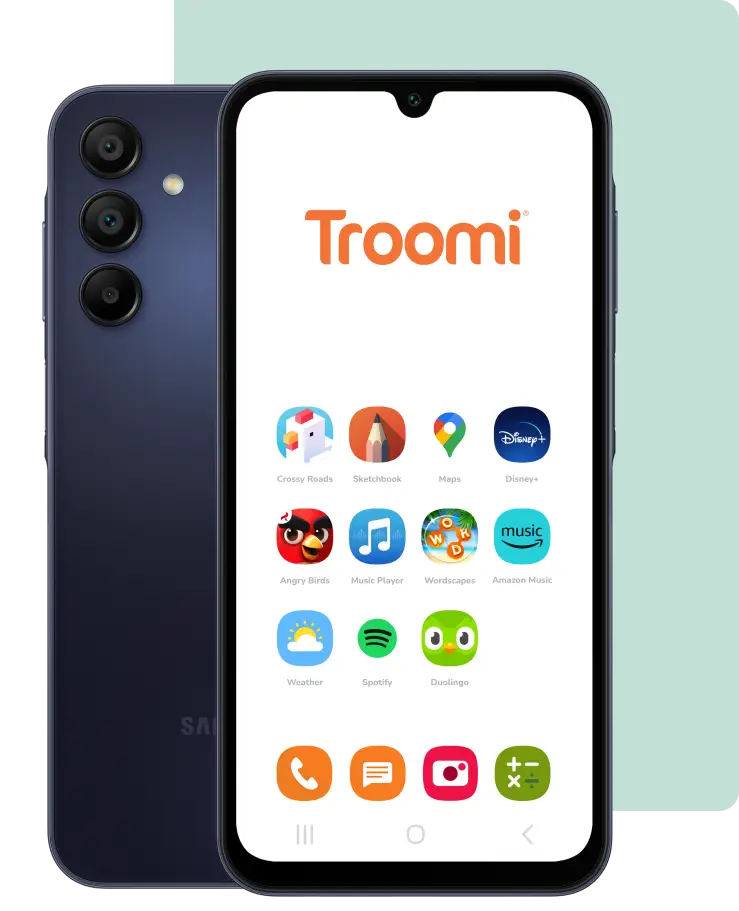Why Instagram’s Teen Features Aren’t Enough to Address Social Media’s Impact on Youth Mental Health
By Bill Brady, Troomi CEO
Early on, the architects of modern mobile technology and social media realized the potential for their innovations to be profoundly disruptive. Many of the very pioneers who built today’s digital world took deliberate steps to limit their own children’s exposure to screens, aware that these tools could have far-reaching effects. Steve Jobs, co-founder of Apple, famously did not allow his children to use iPads, preferring family discussions over screen time at the dinner table. Bill Gates, co-founder of Microsoft, prohibited his kids from using cell phones until they turned 14, enforcing strict screen time limits. Sundar Pichai, CEO of Google, has expressed concerns about screen addiction and monitors his children’s device usage. Evan Spiegel, CEO of Snapchat, along with his wife, Miranda Kerr, has opted to raise their children without iPads, emphasizing real-world engagement over digital interaction.
Despite this early awareness of technology’s potential downsides, social media platforms have largely prioritized engagement over well-being. In September 2024, Instagram launched a teen-specific version of its platform, signaling recognition of the potential harm social media poses to youth. While the move acknowledges the need for greater safety, it ultimately misses the mark on tackling the deeper issues affecting teens’ mental health. Instagram’s new features focus on symptoms rather than root causes, leaving fundamental problems unresolved.
Addressing Problems They Created
Meta (formerly Facebook) has long known about the risks its platforms pose to teens. The Wall Street Journal’s “Facebook Files” exposed internal research detailing Instagram’s links to mental health challenges, particularly among teenage girls. Despite these findings, the company prioritized engagement over well-being for years.
Instagram’s recent efforts feel reactionary—more about responding to mounting external pressure than proactively committing to user safety. While new features, such as time limit reminders and sleep mode, encourage healthier usage habits, they rely on voluntary compliance rather than enforceable restrictions. Meanwhile, the platform’s core design remains unchanged, continuing to foster a culture of comparison and excessive screen time—both of which profoundly impact mental health.
Missing the Mark on Mental Health
Social media’s toxic comparison culture is one of its most insidious effects. Teens, especially young girls, are bombarded with unattainable beauty standards, leading to issues like low self-esteem and negative body image. Boys are not immune; they, too, face pressures to conform to unrealistic ideals.
Beyond appearance, social media amplifies feelings of exclusion. Seeing photos of friends at events they weren’t invited to isn’t just fear of missing out (FOMO); it’s the tangible awareness of being left out. Unlike past generations, today’s teens don’t have to wonder what they missed—they see it play out in real-time on their screens.
This constant exposure erodes gratitude and self-worth, creating a mental health crisis that safety features alone cannot resolve. Research shows that teens who spend over three hours daily on social media experience significantly higher rates of depression and anxiety. Without meaningful intervention, these statistics are unlikely to change.
The Screen Addiction Problem
Instagram’s teen features also fail to address the issue of screen addiction. Limiting interactions with strangers or implementing time reminders doesn’t fundamentally reduce the amount of time teens spend scrolling.
Recent data underscores the alarming trend: Studies, including one from BYU, link high social media usage to increased suicidal ideation. This connection is particularly concerning in communities like Utah, where the CDC has investigated suicide clusters among teens.
Local stories highlight the devastating real-world impact. From sextortion scams to the pressures of being a social media influencer, these digital interactions can escalate quickly, leaving teens feeling trapped and hopeless. Tragically, these situations have led to life-altering consequences for families and communities.
Recommendations for Meaningful Change
Superficial updates to safety settings won’t fix the systemic issues at play. Platforms like Instagram must adopt holistic strategies to support mental health and well-being.
- Fostering Gratitude and Resilience: Introduce features encouraging positive self-reflection, such as daily gratitude prompts or uplifting content tailored to each user.
- Limiting Time Effectively: Implement stricter daily screen time caps or provide customizable usage limits for parents and teens to set together.
- Educating Teens and Parents: Offer resources and managed services that teach healthy social media habits. This approach could include in-app tips, external workshops, or school collaborations.
It is equally critical to empower parents and teens with tools to self-regulate. Platforms must go beyond providing safety options to actively promote education and awareness about safe usage.
Moving Beyond Superficial Solutions
Instagram’s teen features represent a step in the right direction but fall short of addressing the deeper issues that fuel the mental health crisis among youth. To create a genuinely safer environment, platforms must look beyond reactionary changes and adopt preventative, comprehensive strategies. By prioritizing mental health over engagement metrics, social media companies have the opportunity to not just protect users but help them thrive. The question is whether they are willing to embrace this responsibility.
Until they do, the safest bet for kids is to delay social media—not just to the minimum age prescribed by platforms or recommended by pundits, but rather until the time that you as a parent are sure that your child has achieved the emotional maturity, mental resilience and personal discipline necessary to discern real from phony, to choose uplifting content over everything salacious, and to desire IRL, human interaction over the alluring blue glow of the tiny screen that takes so much more than it gives when left unchecked.
More About Bill Brady
In a career spanning 20 years as a marketing executive, Bill Brady has owned two marketing agencies serving global brands that include Google, HP, Netflix National Geographic, Sony and Pepsi.
Since 2018, he has focused on providing children with healthier solutions for using technology. Bill co-founded Troomi Wireless, a mobile phone company designed for children, and serves as the company’s CEO. Most recently, he joined the Safe+Sound Alliance as a founding member.
In addition to providing quality hardware and phone service priced for kids, Troomi is unique for its KidSmart OS®, an operating system that enables parents to graduate kids from one level of functionality to the next based on their needs and maturity. Put simply, Troomi is designed to grow with children and prepare them for the future.
Bill holds an undergraduate degree in Public Relations from Brigham Young University, where he served as Student Body President. He also earned a master’s degree in business from the University of Utah.
Bill and his wife Heidi have been married for 20 years, have five great kids and live in Alpine, UT.


